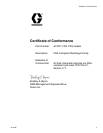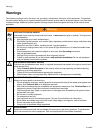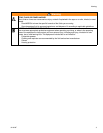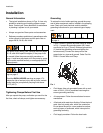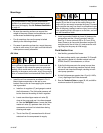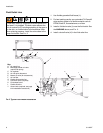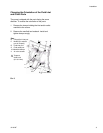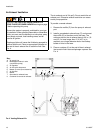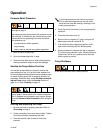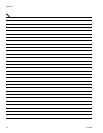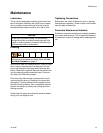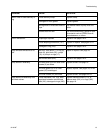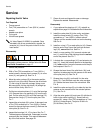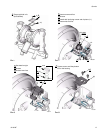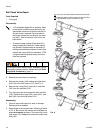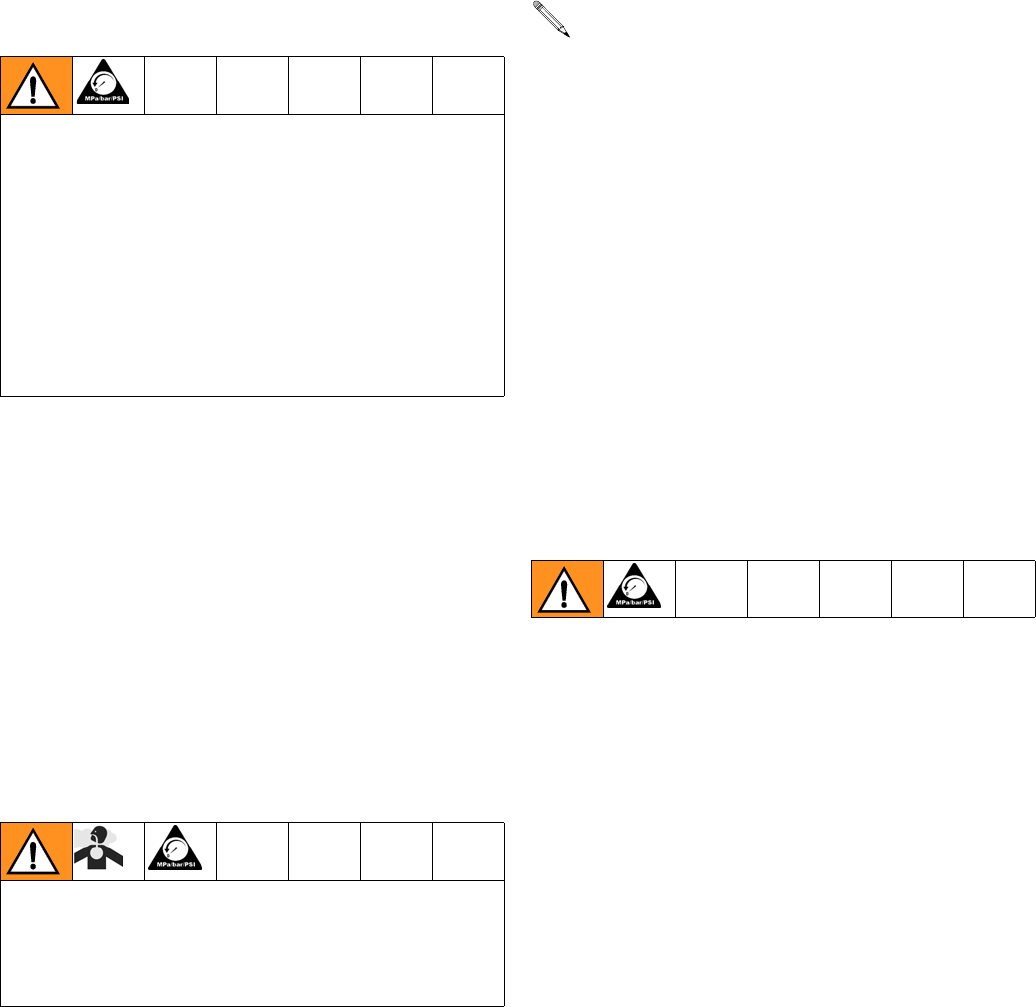
Operation
311879F 11
Operation
Pressure Relief Procedure
1. Shut off the air to the pump.
2. Open the dispensing valve, if used.
3. Open the fluid drain valve to relieve fluid pressure,
having a container ready to catch the drainage.
Sanitize the Pump Before First Use
It is the user’s responsibility to properly sanitize the
pump before first use. It is up to the user whether this
will include disassembling and cleaning individual parts
or simply flushing pump with a sanitizing solution. As
necessary, follow the steps under Starting and Adjust-
ing the Pump below, under the Service section on
page 16, or under Flushing on page 13.
Starting and Adjusting the Pump
1. Be sure the pump is properly grounded. Refer to
Grounding on page 4.
2. Check connections to be sure they are tight. Tighten
fluid inlet and outlet connections securely.
3. Place the suction tube (if used) in fluid to be
pumped.
4. Place the end of fluid hose (L) into an appropriate
container.
5. Close the fluid drain valve (J).
6. Back out the air regulator (C) knob, and open all
bleed-type master air valves (B, E).
7. If the fluid hose has a dispensing device, hold it
open while continuing with the following step.
8. Slowly increase air pressure with the air regulator
(C) until the pump starts to cycle. Allow the pump to
cycle slowly until all air is pushed out of the lines
and the pump is primed.
Pump Shutdown
At the end of the work shift, relieve pressure.
Read the PRESSURIZED EQUIPMENT HAZARD
warnings on page 4.
The equipment stays pressurized until pressure is man-
ually relieved. To reduce the risk of serious injury from
pressurized fluid or splashing fluid, follow this proce-
dure whenever you:
• are instructed to relieve pressure
• stop pumping
• check, clean or service any system equipment
Read the TOXIC FLUID OR FUMES HAZARD warn-
ings on page 5. Never move or lift a pump under pres-
sure. If dropped, the fluid section may rupture. Always
follow the Pressure Relief Procedure before lifting the
pump.
If fluid inlet pressure to the pump is more than
25% of outlet working pressure, the ball check
valves will not close fast enough, resulting in inef-
ficient pump operation.



